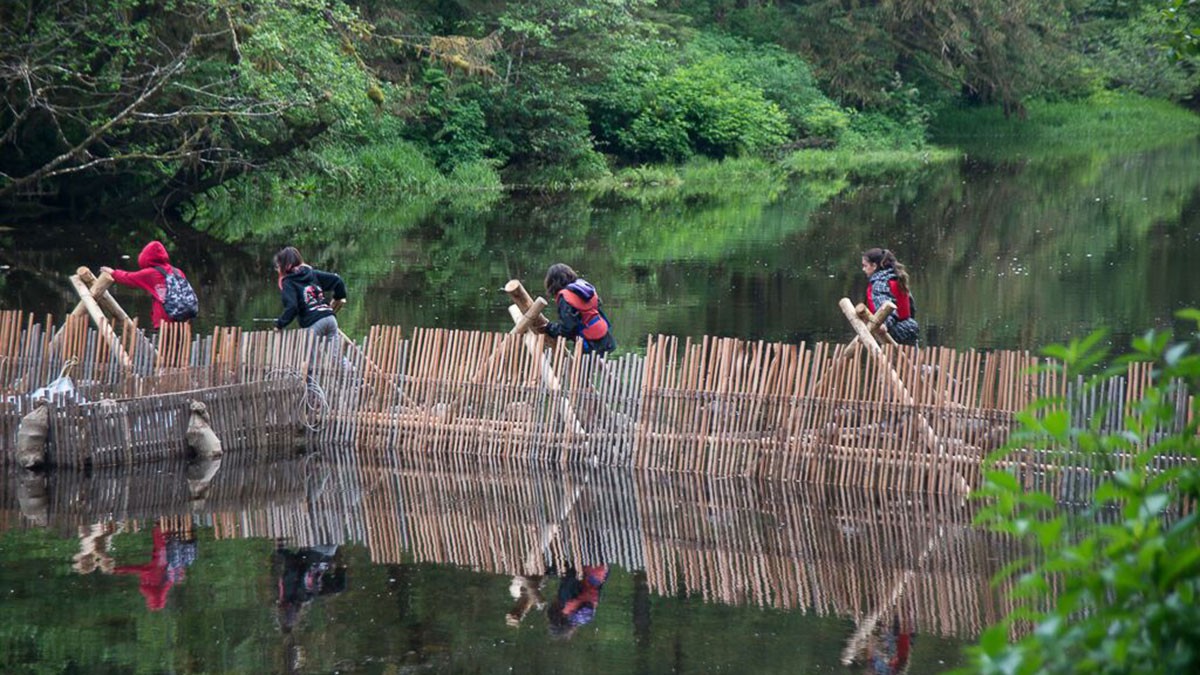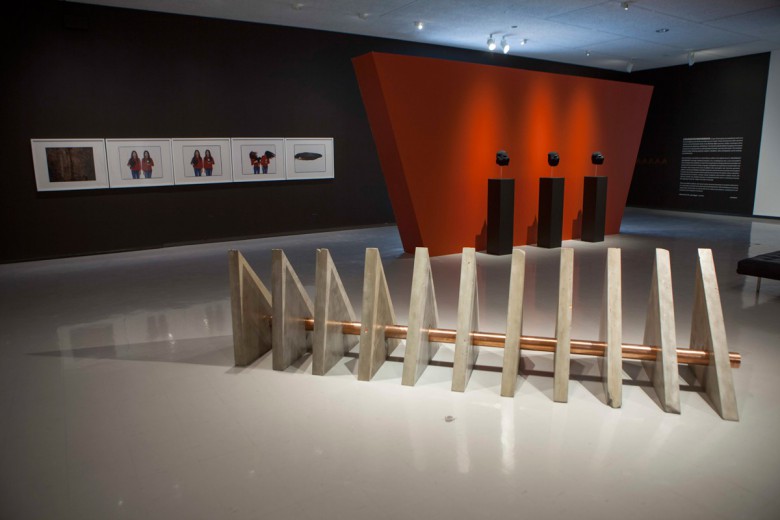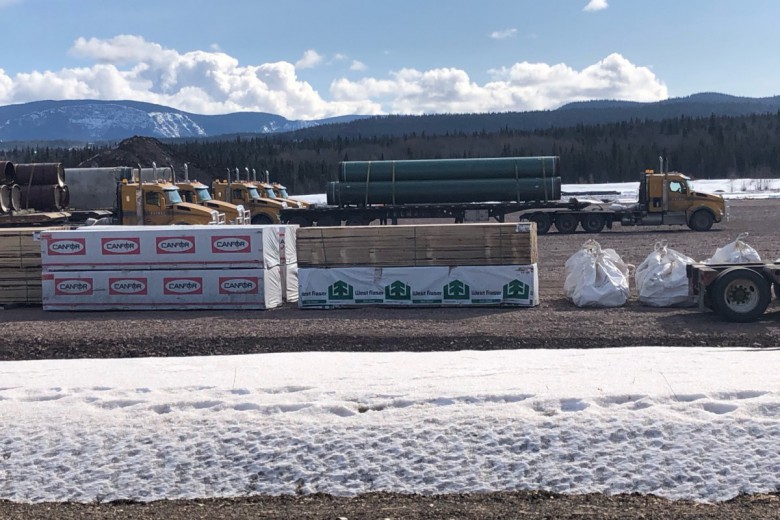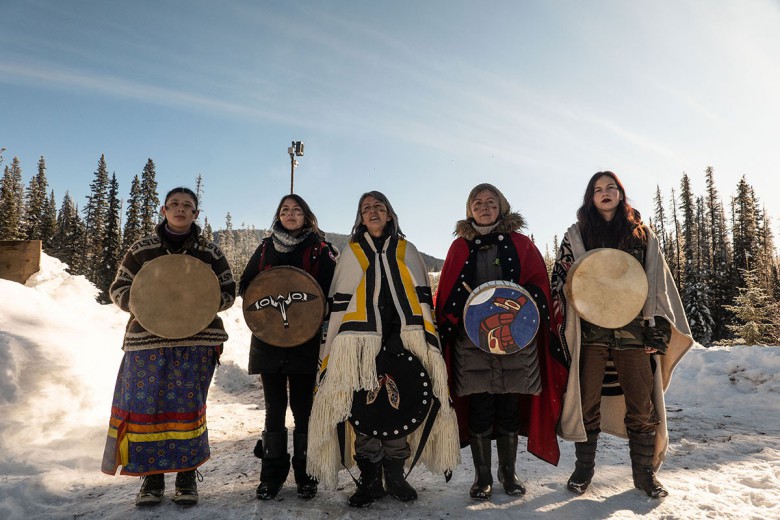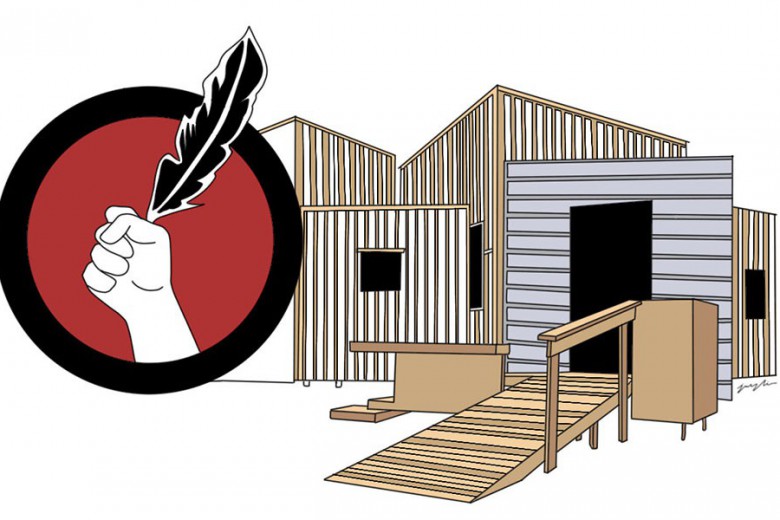Around the time wildfires were blanketing Calgary in smoke last year, I attended a local leftist reading group. They were discussing the impacts of capitalism on natural disasters, agreeing that the wildfires were exacerbated by both global warming and by neoliberal austerity. But when I put forward that invasive, non-indigenous plant species including trees and industrially farmed crops added degrees of severity to the crisis, and that traditional Indigenous systems of land stewardship could help mitigate or prevent natural disasters, I was taken aback by the group’s dismissive response. I was told by the main organizer that my approach to ecology was backwards-looking and idealized pre-capitalist societies, and that without an orientation to the future I risked venerating the stereotype of a “noble savage” in a “lost world.”
At a time when Indigenous land defenders are fighting for cultural resurgence and the application of traditional knowledge to combat the climate crisis, they are often cast as the monolithic, mystical, degrowth opposition to the secular modernity of white leftists and their fully automated socialist future. In reality, solutions to ecological and social problems that were historically or are presently used by non-European cultures are compatible with modern technology, often in consensus with cutting-edge scientific findings, and more necessary than ever.
Still, those lands are being stolen and mismanaged by colonists who believe that their environmental and clean energy projects will be more effective than millennia of land stewardship by Indigenous Peoples.
Indigenous Peoples now make up less than five per cent of the world’s population, but the lands they maintain hold 80 per cent of the planet’s biodiversity. Protecting and restoring Indigenous Peoples’ lands is the fastest and most readily available way to sequester carbon and mitigate the impacts of climate change, a result of the optimally efficient relationships between fungi, plants, animals, and people in a given bioregion, which Indigenous cultures have coded into their knowledge systems over millennia of human-environmental interactions.
Still, those lands are being stolen and mismanaged by colonists who believe that their environmental and clean energy projects – eco-tourism, national parks, and hydroelectric dams – will be more effective than millennia of land stewardship by Indigenous Peoples. Even when they haven’t yet been invented or scaled-up, theoretical solutions like machines that suck carbon dioxide directly out of the air (which would, themselves, require absurd amounts of energy) are emphasized over habitat restoration.
A history of colonial ecology
The ecological problems we face have historical roots in the property law, agricultural strategies, and colonial expansion of Rome, which were also used by the British Empire on Turtle Island. The idea that we could build a truly fair and sustainable society using those foundational European institutions and environmental relations must be thrown out entirely. This makes many people, even the most anti-racist leftists, deeply uncomfortable, because it means we have to reorganize all aspects of life as we know it. Oil and gas, the industrial production of wheat and cattle, and commercial fishing have been sold to us as life-giving and necessary. People demand to know how we will power and feed the world any other way. The truth is that these industries have existed for fewer than 500 years, were established to help eradicate Indigenous nations, and contribute to rapid loss of soil nutrients, tanking biodiversity, proliferation of dangerous diseases, and climate catastrophe.
Contrary to popular belief, it was no coincidence that before the 19th century, the Great Plains were covered in millions of bison and edible plants. It was a carefully managed ecological region where Indigenous Peoples did routine controlled burns to influence bison movement, limit the number of trees, and replenish the soil with nutrients.
The idea that we could build a truly fair and sustainable society using those foundational European institutions and environmental relations must be thrown out entirely.
In the 16th century, settlers began importing cattle into what is now the U.S. Accompanying those cattle were seeds, found in their gastrointestinal tracts and in the hay they were fed during the journey. When coupled with the cattle’s overgrazing, invasive Eurasian plants began beating out native grasses and plants while retaining less water and carbon in the soil. Concentrations of cattle increased throughout the 20th century, and instead of letting them graze, farmers began fattening them up in crowded pens called feedlots, which in turn increased the need to cultivate wheat, corn, and soy to feed the cows. Ancient, well-managed prairie was aggressively tilled for the first time, exposing the soil to the air. Some experts have argued that it resulted in a period of severe and destructive dust storms on the Prairies in the 1930s. Today, farmers help prevent this erosion and increase their crop yields with intensive irrigation from underground aquifers that are nearly bled dry – a practice that some studies estimate will leave millions on the Great Plains without water for crops, livestock, or human settlements within a century. Canada’s largest crops – canola, wheat, and alfalfa – are invasive species farmed using fossil fuel-powered machinery and chemical fertilizers responsible for cyanobacteria blooms in Canada’s freshwater lakes and surrounding oceans. When farmed as monoculture crops, they deplete the soil of nutrients and allow for the spread of pests and diseases.
Human interference like this has caused a dramatic decrease in wild salmon populations, with less than 10 per cent of historic populations returning to Pacific Northwest rivers and streams. In an attempt to buffer these losses in the market, commercial spawning and cultivation of fish has become more prevalent. But far from helping, fish farms are disease accelerators, making both wild populations of fish and humans more vulnerable to a host of pathogens while the industry focuses solely on streamlined production.
Like oil and gas, commercial wheat, beef, and salmon farming on Turtle Island are unsustainable extractive industries with product prices that do not match the real human and ecological cost.
To add insult to injury, Canada alone wastes 26 billion pounds of food that it produces each year, with over 30 per cent of that waste happening at the level of manufacturing and processing. The contributions of these industries to climate change and ecosystem disruption are so significant they cannot be ignored or dismissed as a necessary investment in civilization. Like oil and gas, commercial wheat, beef, and salmon farming on Turtle Island are unsustainable extractive industries with product prices that do not match the real human and ecological cost.
So why do we keep participating? There is a complex web of private property owners, industrial farmers, large-scale processors, and chemical companies, buttressed by the cold bureaucracy of the state, that has been allowed to control the narrative of what is good for us. Beer and burgers, elegant salmon dinners, and road trips are a source of visceral pleasure for people who might otherwise experience very little satisfaction in their daily lives. Industries and governments reinforce this attachment with propaganda that simulates a feeling of community by rebranding consumption as support for local economies. With these forms of consumption rooted in genocide and displacement of Indigenous Peoples, and with modern obstacles like global pandemics and ecological change undermining their viability, continuing any of these industrial activities without fundamental changes is unjustifiable. The question then becomes: how do we move forward?
Reviving Haíłzaqv fishing technologies
‘Cúagilákv, whose English name is Jess Housty, is a citizen of the Haíɫzaqv (Heiltsuk) Nation and a resident of the island village of Bella Bella, a community situated in Haíɫzaqv homelands. These homelands stretch from the western edge of the mainland, where the land is one of complex forest systems and alpine lakes, through muskeg and coastal watersheds, out to the open Pacific Ocean. “We’re forest people and ocean people, but we thrive in the spaces where they overlap,” Jess explains.
Jess was home-schooled in her community, and “had lots of flexibility to take our learning out on the territory,” she recalls. In her community, Yíṃás (Hereditary Chiefs) and elected chief and council members collaborate on decision-making, allowing the community to “exercise all the tools at our disposal to care for our homelands,” Jess notes. The sharing of knowledge between generations is indispensable in the process of preserving and protecting their ancestral lands and waters, and Jess works with youth at the Koeye River Valley every year to connect them to the cultural and scientific legacy of thousands of years of Haíɫzaqv-environmental interactions.
“We’re willing to wield science as a tool in our work because truly, our people were scientists,” Jess tells me. “We had systems for organizing and transmitting knowledge. We developed practices, teachings, and laws based on our careful experimentation and observation, our code of ethics, our rigour, our intelligence, our drive to understand the world around us. We don’t differentiate between ‘our knowledge’ and ‘science.’ We differentiate between frameworks: ‘Haíɫzaqv science’ and ‘western science.’” There is no confusion in the community about which methods are most appropriate for Haíɫzaqv people or their territory. “We’ve seen decades of academics coming into our territory to earn degrees studying obscure things that have no practical application here. That doesn’t happen anymore. We now have relationships with academic institutions that allow us to be an early point of contact for researchers in all fields who want to come into the territory. They’re expected to develop projects that will advance our territorial governance and stewardship.”
“We’re willing to wield science as a tool in our work because truly, our people were scientists.”
One such project is a traditional fish weir on the Koeye River, where scientists from Simon Fraser University’s department of biological sciences, the University of British Columbia’s department of statistics, and the Hakai Institute collect data about salmon health. The weir – a technology that’s been used by IndigenousPeoples in the Pacific Northwest for over 5,000 years – is a set of wooden posts spanning the width of the river that guide salmon into a trap where they are tagged and then released to spawn upstream. Weirs have long been used by Indigenous fishers to track salmon populations and help make sure they weren’t overfishing – until the late 1800s, when the Dominion of Canada banned Indigenous fishing technologies, under pressure from industrial fisheries which wanted to exploit salmon stocks without competition. Today, the revival of the weir allows scientists to monitor the salmon’s movement through their tags and study the impact that variables like water temperature have on their populations. They’ve found that high water temperatures are associated with higher rates of death in migrating adult sockeye salmon – a crucial insight into how climate change will affect biodiversity and food security. A Haíɫzaqv-led non-profit, Qqs Projects Society, is a key partner on the project, and brings children to visit the weir, teaching them about their relationship with the salmon, the logic of traditional technologies, and the respect for life that is crucial to the continuation of their subsistence systems.
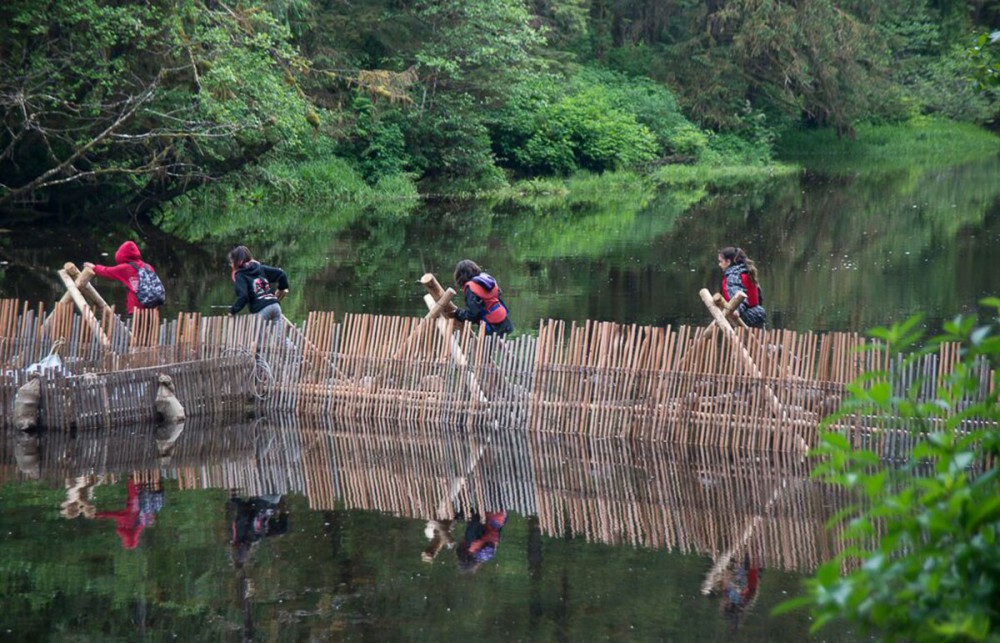
The success of collaborative Haíɫzaqv-academic projects like these could be expanded were it not for limited resources, Jess explains. “When it comes to Nation-level work like financing our Guardians program or staffing our stewardship office, funding is always a challenge. Fighting through government funding and philanthropic dollars and own-source revenue to pull together a budget for critical work, that’s a challenge every year.”
The inherent value of traditional strategies can be misunderstood or completely excluded from profit- or growth-driven budgetary considerations. “The way the western world talks about Indigenous knowledge by and large does it a disservice,” Jess says. “It’s treated like a new-age novelty or a tokenistic box to check on a referral or consultation strategy. It’s deeper than that. It’s sacred, nuanced, organized, and rooted in deep relationships with the world around us. It’s careful. It’s observant. It’s adaptive. It’s not fodder for some generic inspirational Indian proverb meme. It’s a living system by which many of us still organize our lives and map our identities.”
Bringing back the bison
Joely BigEagle-Kequahtooway, whose spirit name is Umba Zitkana Ho Wash’tay, is Nakota/Cree/Saulteaux from White Bear First Nations, located in the southeast corner of the Moose Mountain area of Saskatchewan. Growing up in the urban centres of Regina and Saskatoon, she tells me, “I found the only connection to the land I could find,” spending time in parks and stands of trees, where she would pretend to be alone exploring and picking fruit.
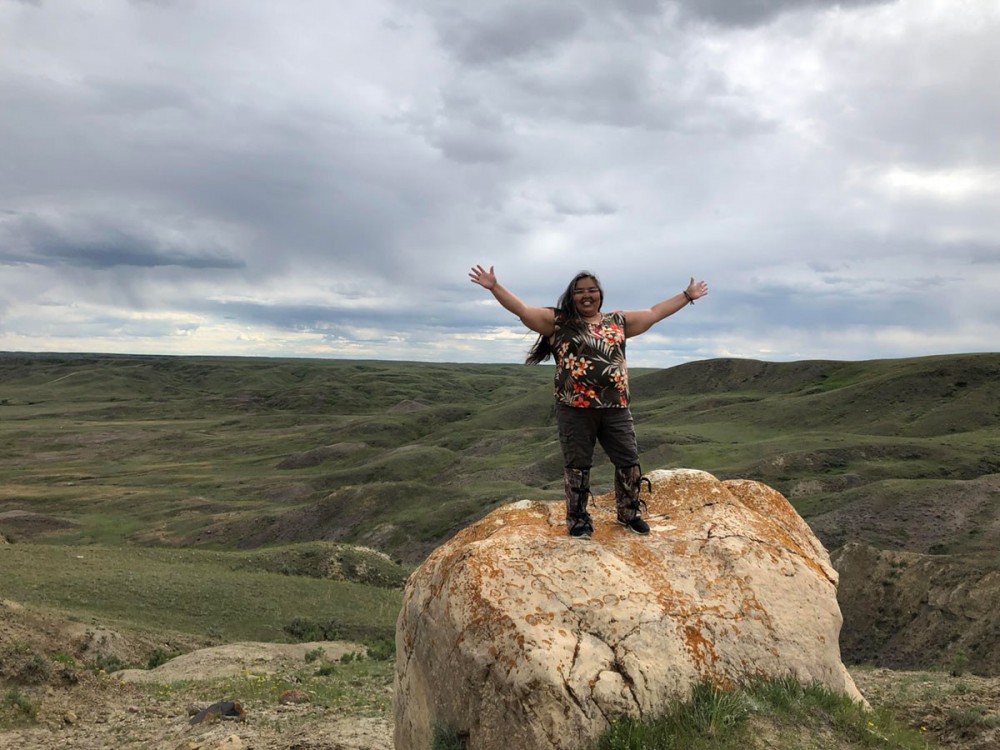
In 2014, after getting degrees in mathematics and civil engineering, Joely was running a boutique selling hand-made Indigenous art when a local non-Indigenous bison rancher offered her a raw bison hide. “She hoped that instead of it being thrown away it could be of value to us,” Joely recalls. “We never shared that we weren’t skilled buffalo people, but we were excited to learn how to tan the hide. It wasn’t as easy as we thought. We had to salt the hide while we waited to find teachers. It took almost a year and a Facebook post from one of our Sundance brothers who was hosting a deer hide tanning youth workshop in Manitoba. My husband packed up two buffalo hides – one to gift the teacher and one to learn to scrape.”
Since then, “We’ve been learning how to tan buffalo hides and also to share as we learn,” she says.
Before colonization, an estimated 30 million bison roamed Turtle Island, but by the end of the 19th century their numbers dwindled to fewer than 1,000 thanks to colonial policies and hunting by settlers. “The majority of Indigenous people have forgotten their connection to our ancestral animal,” Joely says. “Most have never eaten buffalo, seen a buffalo up close, smelled one. Almost all have never scraped the fat and meat off one to tan it.” In 2015, she co-founded the Buffalo People Arts Institute (BPAI), a non-profit whose mission is to “bring back the buffalo emotionally, mentally, spiritually and physically,” including by running workshops on bison hide tanning.
“We aligned ourselves to the similar mission of the Buffalo Treaty that was established in 2014 with Dr. Leroy Little Bear at the helm,” she explains. The treaty, signed by nations and tribes on both sides of the 49th parallel, committed to restoring the bison in their homelands.
“When the buffalo return, new species return, ecosystems return that were dormant. They can survive on their own with little intervention, in comparison to cattle.”
The legacy of colonialism and its style of private land management is still an obstacle in reintroducing bison to their ancestral habitats. Cattle ranchers vehemently oppose expanding bison ranches, arguing that bison may pass diseases to cattle herds. But both Indigenous and settler sciences affirm the benefits of bison for both habitat restoration and human health. “When the buffalo return, new species return, ecosystems return that were dormant. They can survive on their own with little intervention, in comparison to cattle,” Joely tells me.
“They are the better, leaner, more nutritious meat for our bodies when paired with root vegetables and fruits/berries of the land,” she explains. “Part of our work is feeding people buffalo at community feasts and getting them used to eating it again. Our diets, historically, were changed from buffalo, vegetables, and fruit from the land to pork, salt, sugar, and flour. There is no wonder why diabetes consumes our communities.”
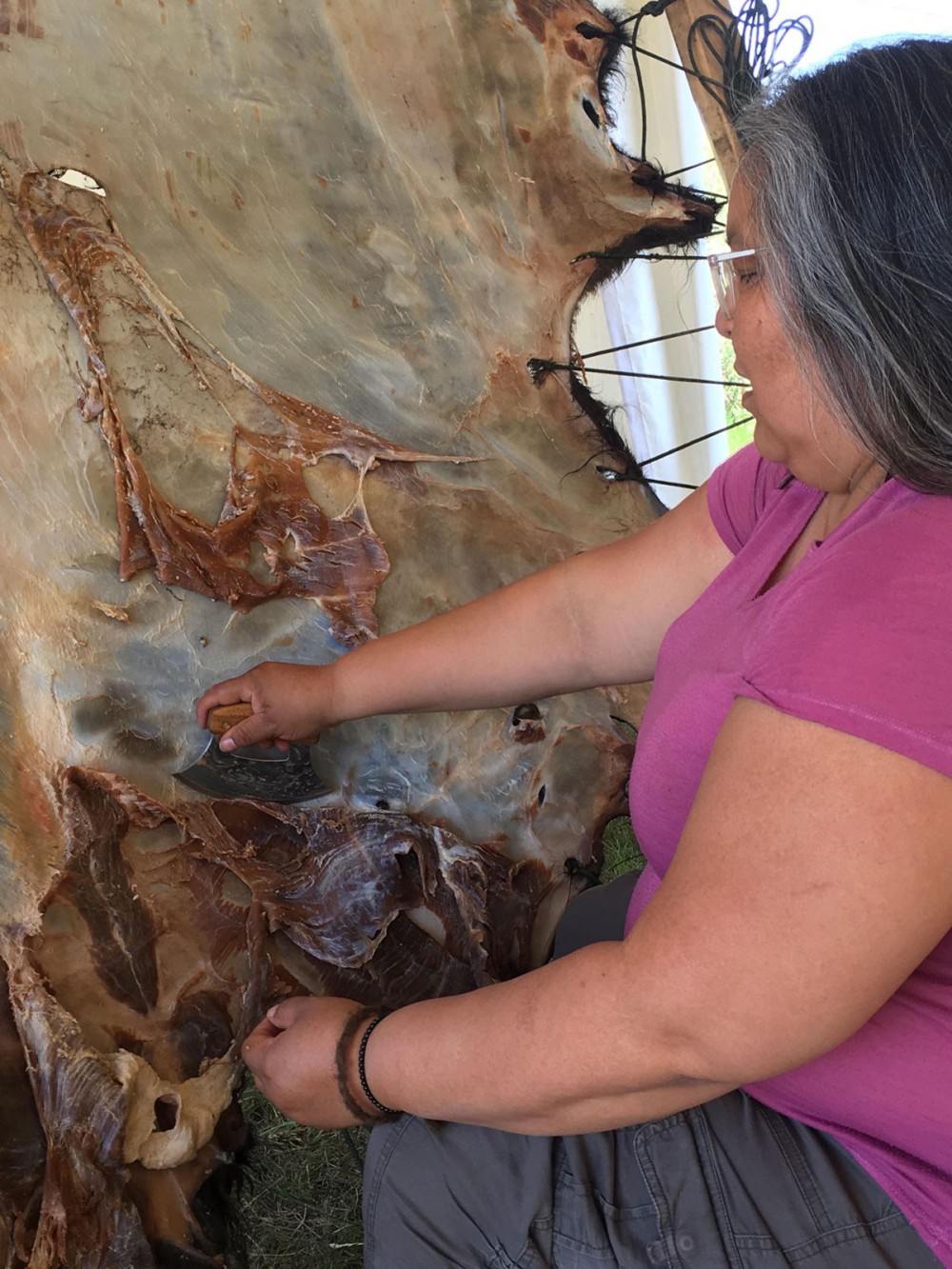
“I hope that my First Nation considers creating a environment for the buffalo to live on,” she says. But in order to reintroduce bison on a large scale, she believes “we will need all types of assistance from many different levels of private, corporate, and governmental organizations.”
“Looking back does not mean we need to stop our Indigenous cultures from growing,” she adds. “I support solar and wind power. I support modern technologies. There has to be a way to come together as Indigenous and non-Indigenous cultures to join methodologies and practices for the health and well-being of future generations.”
Restoring WSÁNEĆ protocols
ŚW̱,XELOSELWET ŦE NE SNÁ, whose English name is Tiffany Joseph, lives part time in the village of STOLȻEȽ (Friday Harbor on San Juan Island, Washington) in the rain-shadowed homelands of W̱SÁNEĆ. ŚW̱,XELOSELWET means “camera lady” – living up to her name, Tiffany studied independent filmmaking, and makes films to help her communities preserve and share their knowledge.
Tiffany has been working in SṈIDȻEȽ, which is the village where the first W̱SÁNEĆ person came from the sky. “His name was SȽEMEW̱ and he came down with the rain. We call rain SȽEMEW̱, so we as W̱SÁNEĆ people are descendants of the rain.” The village is filled with cedars, Douglas firs, grand firs, and the June plums that are the first to flower in the spring, and in the middle of it all are the remnants of the abandoned cement factory that was built on the territory without permission, and a trail that used to be a road. At the end of the trail you can see SX̱OX̱IYEM, which means “deep still water,” a place that the many marine ecologists who have come to assess the impact of the cement factory call Willis Point. “Whatever runs off into the inlet stays there for a really long time,” Tiffany explains.
“We’ve dealt with contaminated soil, and are often removing large cement chunks, abandoned car parts, mattress springs, and other household items from the sites.”
Along with other youth and community members, Tiffany works on the SṈIDȻEȽ Resiliency Project, removing invasive plants such as blackberry and English ivy from the garden that was formerly a limestone quarry for cement production. “We’ve dealt with contaminated soil, and are often removing large cement chunks, abandoned car parts, mattress springs, and other household items from the sites,” she says. Environmental restoration helps reduce runoff into the inlet, and a collaboration with the SeaChange Marine Conservation project saw large pebbles and sand placed along the shoreline to mitigate erosion. But the obstacles are less about the difficulty of removing contaminated soil and invasive plants and instead more about changing colonial mindsets.
“In 2015, I was asked to lead ‘ethnobotanical walks,’” she recalls. “I cringed, because I didn’t want to talk about how all these plants were ‘used.’ It felt out of alignment with the teachings I’d been given, that any knowledge of our culture is best learned from our family, and when it’s not available through our family, then we must reach out to Elders in our nations,” she tells me. “The learning is done through observing, listening, and following, and it would take time and mentorship.”
The walks she led through the village “eventually became more and more rooted in our W̱SÁNEĆ worldview and history of plants, land, water, sky, and animals as ‘beings’ and our relatives,” she explains. “In our protocols we talk to plants, sing to them, pray to them, and ask permission to harvest them, so I teach people to do the same. I also take time to see how the land relates to the water. In SṈIDȻEȽ, there’s lots of Oregon grape within the forest, and near the shore is a lot of shell midden. Oregon grape is a W̱SÁNEĆ medicine for shellfish poisoning, so if W̱SÁNEĆ people can ever harvest shellfish again in SṈIDȻEȽ, it’s good to have the medicine close by.”
“In our protocols we talk to plants, sing to them, pray to them, and ask permission to harvest them, so I teach people to do the same."
“What I haven’t had the privilege to do with my own two hands, I try to record in order to share with my community, or for future generations,” she notes. She gives the example of the community’s marine life garden project. Community members build gardens on the beaches to reseed clams and to teach W̱SÁNEĆ children knowledge and skills about “this way of life that our grandparents’ generation and older lived,” says Tiffany. Last year, she interviewed the Elders, knowledge carriers, and clam gardeners for a video to share with the W̱SÁNEĆ people and Parks Canada. The results of the gardens are easy to see. “The clams that were in these beaches before the project started were black, and now many have turned white,” she notes.
In contrast to stereotypes of Indigenous Peoples as hunter-gatherers, oral histories and research prove that Indigenous Peoples in the Pacific Northwest have been farming clams for over 1,000 years – constructing stone terraces and stacking sediments in the tidal column to perfect clam-growing conditions and harvesting selectively to feed large numbers of people without decimating the clam population. Even so, the myth that Indigenous Peoples were solely foragers, not farmers, was leveraged by colonial governments to justify stripping Indigenous nations of their land base.
“Be strong enough to let the land govern you”
The destruction wrought by colonization cannot be undone, but we can recover from it. Tiffany explains that one must “be strong enough to let the land govern you.” In this sense, “Land Back” is not just the acknowledgement of the sovereignty of First Nations, but a reminder that “the land is sovereign and the land is what you should obey,” she says. It is a call for us all to take responsibility in maintaining a meaningful relationship of reciprocity with the land.
We could use our technological advancements and industrial scale, guided by Indigenous knowledge, to reintroduce the bison herds onto the Prairies at the same time that we install wind turbines to power the cultivation of food that nourishes people with minimal land use or waste. We can rapidly reforest areas that were clear cut for industrial agriculture or pipelines, and revive animal populations in traditional food forests. We can use low-carbon infrastructure to cultivate mollusks that clean polluted waters, feed people, and create habitat for other species all at the same time. We can create new social norms and cultural institutions that centre children, the elderly, and our interdependence with life on Earth.
In this sense, “Land Back” is not just the acknowledgement of the sovereignty of First Nations, but a reminder that “the land is sovereign and the land is what you should obey."
Our current problems are the result of a number of historical conditions being realized, and are not a fundamental manifestation of our nature, evolutionary trajectory, or destiny. Designing a society that makes happy humans with healthy bodies and minds in resilient ecosystems does not involve “going back” to any ideal period of history, but it does require us recognizing that Indigenous knowledge and ecological stewardship are and will continue to be successful; that ecosystems have regulating functions that are better at preventing pandemics and responding to climate change than present human technology; and that the legacy of industrial agriculture, capitalism, and its exploitation of people and the planet should no longer be the standard that shapes our vision of progress.
Reviving and scaling up Indigenous ecological practices is one crucial tool in the broader project of defending land, Jess reminds me, and she stresses that traditional systems are not relics of the past. “Whether we’re fertilizing wild berry orchards with the guts from our food fish and calculating how many branches full of herring roe we need to leave in the water to hatch – or negotiating policies, enacting Haíɫzaqv-led management strategies, and locking down federal buildings to assert our sovereignty – we’re here. It’s applied. It’s real.”
“Everyone benefits from the work we do – not just our community. In protecting the ecological gem of our territory – its biodiversity, its spiritual value – we’re benefitting everyone,” she says. “But at the end of the day, it’s our own community who’s fighting to make sure we can keep doing what we’re doing.”


